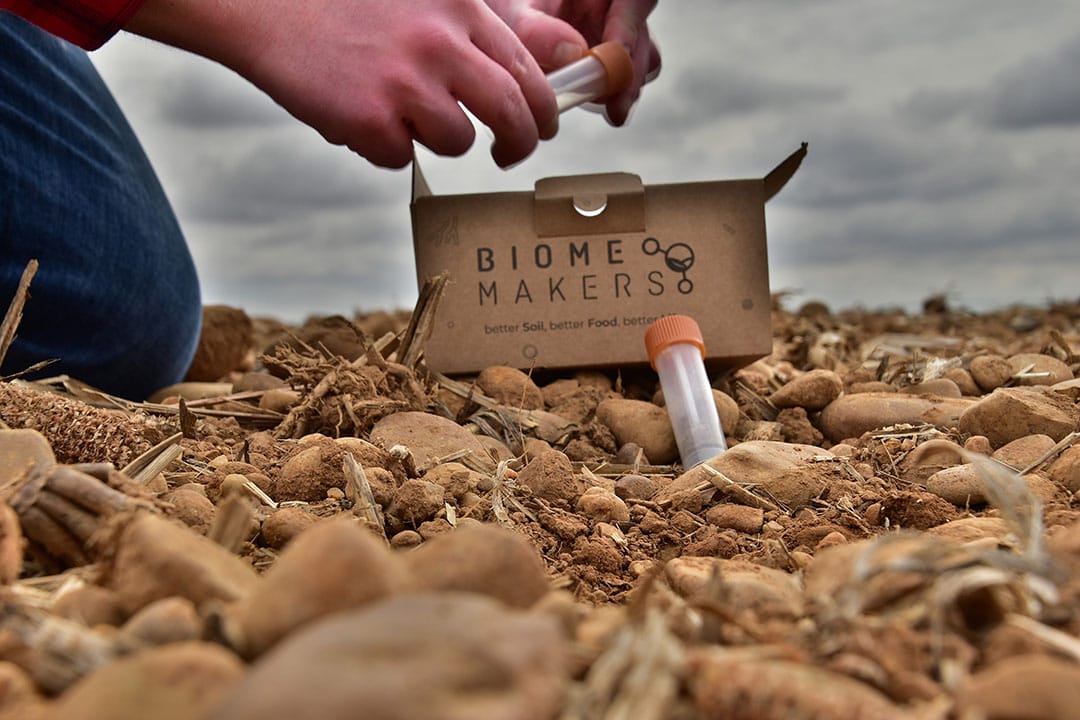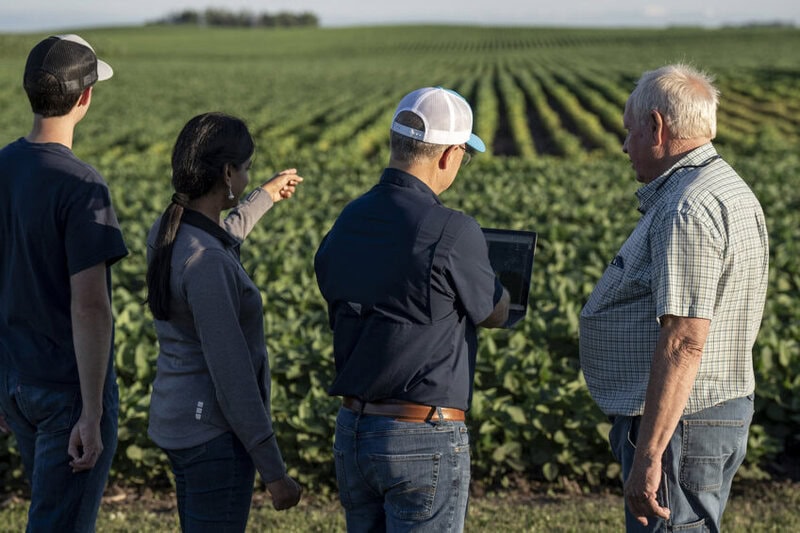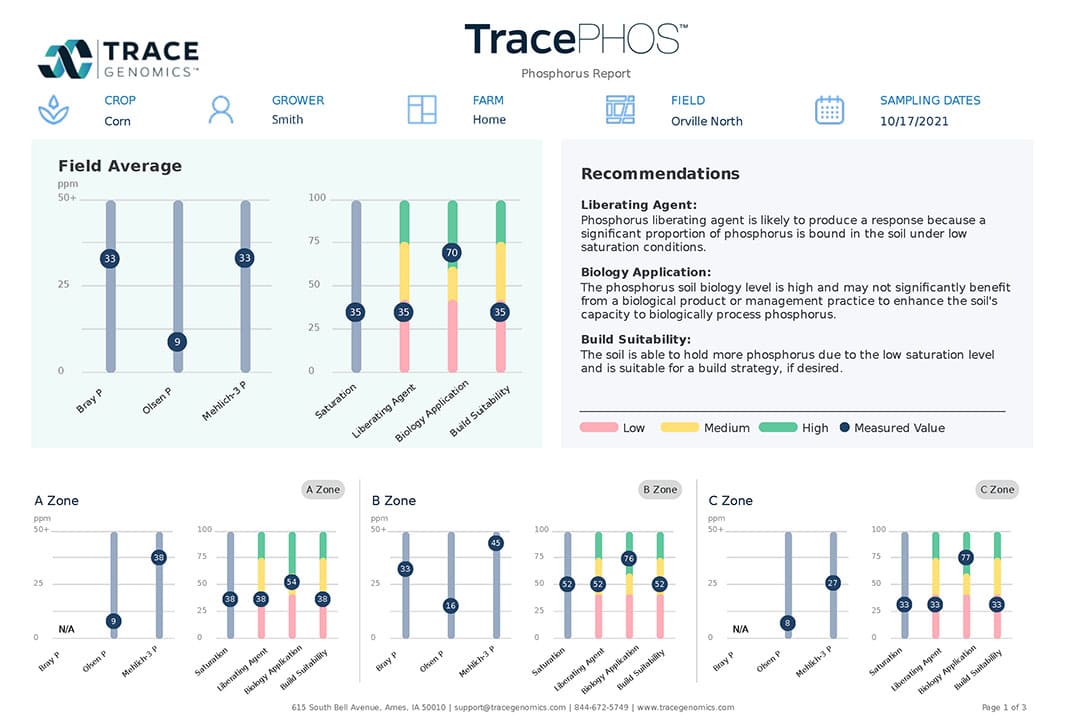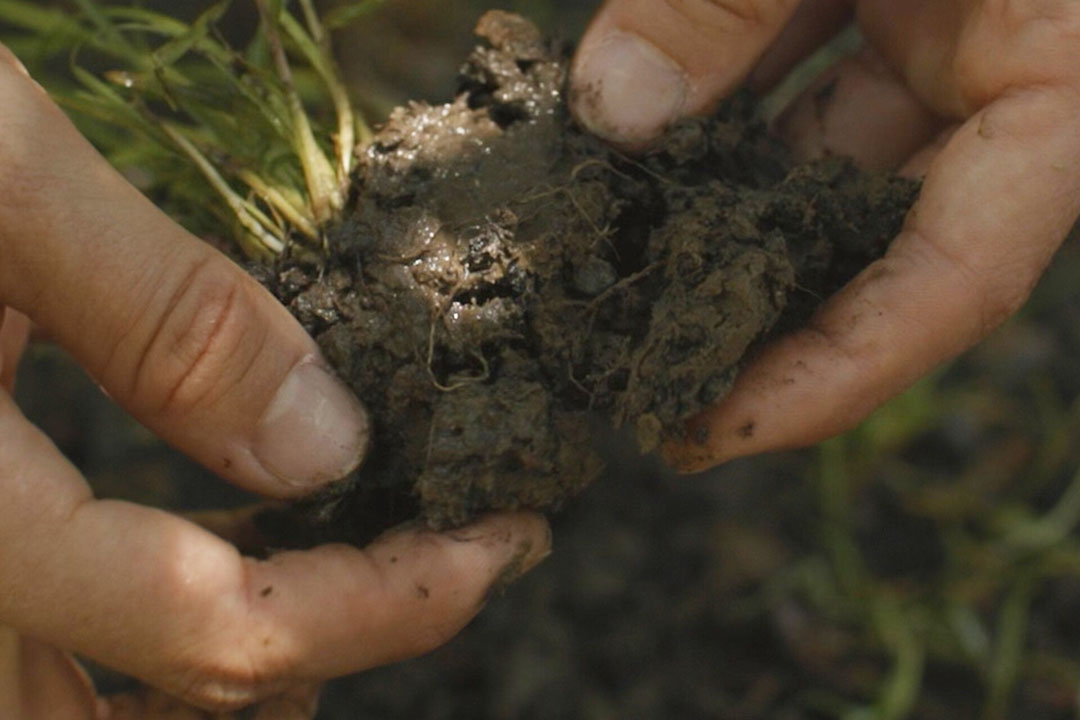DNA soil analysis, what’s involved and the benefits it provides

Intensive DNA testing of the soil microbiome – also called biological soil analysis – is becoming more common in many crop-growing countries around the world, and for good reason.
Combined with soil type data and current fertility levels, an unprecedented level of analysis can be achieved with DNA testing, resulting in farmers receiving much more accurate recommendations to support higher yields, lower pest pressures over time and increasingly-improved soil health season after season.
There are two main companies providing these cutting-edge services, both booming. Trace Genomics is based in Iowa. In July, Trace expanded its partnership with CHS, the largest farmer-owned cooperative in the US with a global reach of about 65 countries. Starting in August, Canadian growers can access Trace tests througha partnership with Taurus Agricultural Marketing.
The other major firm is Biome Makers, which is based in California and has labs/offices in two other US states, Spain and France. Its tests are offered in 45 countries. In July, a collaboration was announced where Biome Makers’ BeCrop technology is now available to farmers in Spain through CaixaBank financing. The relationship between the two companies stemmed from BeCrop technology winning recognition in the International Agrotech Ventures Program organized by CaixaBank and the European Innovation Council.
Text continues below photo

Overview of soil life
As one can imagine, analyzing the DNA in a soil sample provides an unheralded level of understanding of soil ecosystems. The DNA is extracted, sequenced and compared with DNA profiles of known types of bacteria, fungi and invertebrates, some of which are obviously pathogenic and therefore can limit yield.
The DNA present is also quantified so that a picture can be created of the overall amount, diversity and functions of soil life present. This DNA data is then combined with other data using advanced AI platforms. The unprecedented insight results in very specific recommendations to better manage soil fertility, soil health, plant performance and control of pests and disease.
Not driving blind into each season
“It’s very important to farmers to not feel like they’re driving blind into each season,” says John Appel, who leads North American sales for Biome Makers. “Armed with DNA analysis, you can get a diagnostic of the whole microbial ecology, the interactions among living things in the soil, including both beneficial and detrimental functions. That approach leads to the ability to take action in improving plant performance and soil health.
Two common use case examples include 1) disease risk, which can be mitigated early on with better seed or fungicide placement, and 2) nutrient management, which can be optimized based on biology present. Our customers tend to focus on biological products, but we increasingly have customers looking to combine both conventional crop protection products and biologicals. Using multiple modes of action is not only important for pest and disease control this season, but for the critical of preventing resistance over time.”
Soil tests offer one-dimensional analysis limited to chemistry
Dr. Poornima Parameswaran, CEO and President at Trace, explains that while traditional soil tests offer one-dimensional analysis limited to chemistry, Trace goes to four dimensions, integrating soil DNA analysis, with soil chemistry (nutrient cycling), soil carbon data and soil texture. She adds, “for example, with our flagship product TraceCOMPLETE, we can detect up to 225 soil-borne pathogens and pests such as soybean cyst nematode, corn rootworm, tar spot, white mold, goss’ wilt, cercospora leaf spot, red crown rot, etc. This list includes 50 new pathogens that we are releasing this fall. And as we add new pathogens, we can go back and analyze a soil sample from years ago to see if that pathogen was present then or not. That’s just one example of how our analysis can affect a farmer’s choice of long-term practices or new interventions.”
Text continues below photo

Results and recommendations
BeCrop Testing provides insights into soil quality, nutrient mobility, pathogen risk, stress adaptation, and hormone production. Biome Makers’ database contains more than 17 million microbes, the largest global reference database of its kind in existence.
For farmers, results relating to pest and disease presence in the soil lead to a risk level determination, which then guides better decisions, for example choosing a more tolerant soybean variety or corn hybrids, whether seed treatment is worth the money or which fungicide to use.
Soil nutrient cycling is also significantly affected by the populations of microbes present in the soil, which soil DNA analysis uncovers. Improvements in how much nitrogen and phosphorus are available to crop plants have a huge impact on yield, and farmers can use microbial DNA analysis to monitor and alter soil pH, add organic matter and use or avoid certain products and types or amounts of fertilizer.
Text continues below photo

Lower fertilizer application
“Recommendations relating to optimizing nutrient management come from identifying yield-limiting biological bottlenecks across various nutrient mobilization pathways, and can lead to lower fertilizer application rates and improved yield,” says Appel. “For example, we worked with a high-productivity corn grower who identified nitrogen pathways as a bottleneck to further productivity gains and by applying a soil amendment and biostimulant, this grower was able to reduce his UAN rates by approximately 20% and still achieve boosted yield. That grower gained over $ 100 per acre in additional income.”
Different fields owned by one farmer can also differ in soil type and microbiome, and Appel explains that field-level comparisons are highly useful. “Understanding differences in biology from field to field often leads to insightful discoveries of broad improvements or impacts of different management practices, such as tillage or cover cropping” says Appel. Understanding the relationships between farming practices and the soil’s microbial diversity also enables the adoption of practices that produce improvements in both agronomics and the environment. That’s why we suggest to growers that we work with them every season. Microbiomes change over time with the use of cropping practices such as degree of tillage and what type of crop rotation is being used, but also with yearly weather.”
Value proposition
However, while many of Biome Maker’s customers are farmers, agronomists, and food companies with contracted grower networks, the firm mostly works with crop protection product companies looking to assess their products and retailers who are commercializing these products.
“We offer a strong value proposition to our partners,” says Appel. “Crop Protection companies are always doing field trials to assess efficacy, but are often missing the soil ecology analysis. With that in hand, they can much better understand the actual functional impact of different treatments rather than yield alone. Retailers on the other hand, are looking to us to help them with a data-driven selling approach. Many retailers are already doing chemical fertility sampling and tissue sampling, and layering in microbiome data leads to improved agronomic recommendations, more grower trust and market share gains.”
Text continues below photo

Phosphorus and nitrogen
Delving a little further into fertility and nutrient cycling, Parameswaran explains that the Trace analysis allows much more precise fertility application because it is guided by both chemistry and biology data. This is of course additive to the application of conventional and biological crop protection products, the use of seed treatments and choosing different varieties, placing each of them so that they will result in the highest yields possible.
The AI we have developed rolls everything into an indicator, which leads to recommendations
Looking at phosphorus, Parameswaran points out that farmers need to know not only how much P is in the field, but also the degree that a soil microbe community is capable of making the P that’s present available to plants. “We do genome sequencing to determine how many are present that have the genes that enable them to do P mobilization/solubilization,” she explains. “There are thousands of microbes that do this for P and other nutrients, and hundreds of genes are involved. From every field, we produce 10 million data points that we interpret into not only which microbes are present but what they are doing in terms of genes in terms of nitrification and denitrification, ammonium oxidizers, under specific soil conditions like water availability and soil pH. The AI we have developed rolls everything into an indicator, which leads to recommendations.”
Advice for adding blologicals
The farmer may be advised to add biologicals (bacteria or fungal inoculants that are P solubilizers and mineralizers, N inoculants, mycorrhiza products with a broad range of action), chelating agents or a specific type of P to be applied over others. It could be broadcast-applied P, animal manure, seed-safe liquid starter fertilizers or others.
Influencing nitrogen cycling must also be done carefully. Based on Trace recommendations, the farmer can use nitrification inhibitors, urease enzymes and apply nitrogen in different forms. Parameswaran notes that in some soils where microbes are converting nitrates into nitrogen gases at a high rate, not only does this increase loss of N in the soil, but also increases greenhouse gas emissions. “When you add N stabilizers, you slow down the conversion to nitrate,” she notes, “giving crops more opportunity to utilize the nutrients and minimizing loss.”
Looking forward, Appel notes that widespread use of soil DNA testing will continue to drive positive environmental outcomes relating to farming. “Reduced reliance on synthetic fertilizers and pesticides means that less of these materials are lost in our waterways and atmosphere and allows for reductions in GHG emissions,” he says. “Further, we know that adoption of different management practices drives carbon sequestration, which we can now measure and monitor.” Parameswaran echoes these thoughts. ”. “With soil DNA analysis,” she says, “Trace is activating soil’s hidden potential to deliver economic benefits to the farmer, and ecosystem benefits to build a healthier planet.”



